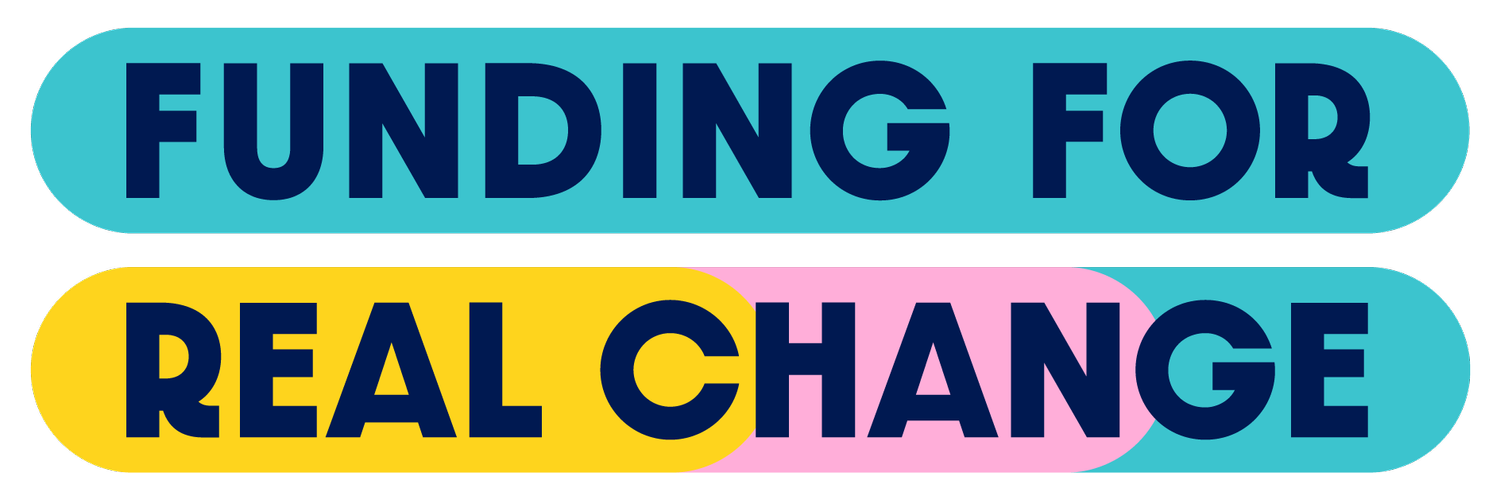
Understanding the Problem:
There are real ‘missing costs’ arising from the nonprofit starvation cycle. These come in the form of systemic under-resourcing of core organizational functions.
Breaking the cycle:
This underinvestment will persist until funders recognize the importance of breaking the nonprofit starvation cycle to enable civil society organizations and social movements to fulfill their full potential.
The Nonprofit Starvation Cycle’s true impact:
-
Low indirect cost coverage disproportionately burdens small BIPOC-led organizations and organizations outside of major cities.
Smaller organizations have higher indirect cost rates and larger organizations have lower indirect cost rates (economies of scale). BIPOC-led organizations tend to be smaller, with higher IDC rates.
Organizations located in smaller cities and rural areas rely heavily on IDC coverage from project grants to fund overhead costs since access to revenue sources often used to fund overhead costs (e.g. high-net-worth individual contributors, special events, direct mail) is scarce.
Understanding your grantee’s demographics is a great way to start working towards a more just and equitable distribution of resources.*Observations about BIPOC-led organizations are in a U.S. context, based on publicly available financial data. They are likely relevant outside the U.S. with respect to under-resourced communities (ethnic, religious, etc.) in a given country or region.
-
Civil society organizations and social movements rarely initiate conversations around the real administrative costs needed to do their work at the fear of looking inefficient to funders. Grantees’ administration costs nearly always exceed the rates covered by funders and yet grantees accommodate rather than confront.
Research showed that they have low expectations of the extent of the cost coverage they are likely to receive from funders. These low expectations are an indication of a flawed ecosystem of imbalanced power.
Grantees can feel power imbalances when their expertise is not included in decision making around impact, when there is no room for grantee feedback, and when evaluations are applied only to grantee work and not to funding practices. The inequality of the power dynamic is likely to be increased when only a few funders support a large chunk of the grantees’ work.
All this places a greater responsibility on funders! Initiate a conversation with your grantee partners and share this calculator tool to help them understand their real indirect costs needs.
-
Restricted funding through non-flexible giving, such as project-restricted giving with low indirect cost coverage, does not allow for an investment in the infrastructure and sustainability of movements and nonprofits. Respondents reported the following common impacts of inadequate cost coverage to the research survey.
How are nonprofits affected?
42% have less than 3 months operating reserves.
53% face deficits in 2+ out of 5 years.
50% of the civil society organizations and social movements surveyed had unrestricted reserves equivalent to 21 days or less of annual expenditure.
⅔ said they were unable to attract or retain staff with adequate knowledge and experience.
37% of organisations always or very often adjust administration functions to reduce costs when a donor provides insufficient administration costs coverage.
Which functions are most under-resourced?
When asked about the extent to which key organisational functions are resourced, the five least resourced functions were:
safeguarding function (54%)
fundraising/business development function (53%)
premises (43%)
human resources function (38%)
management information/technology systems and functions (36%)

2/3
2/3rds of largest US foundations cap indirect costs at less than 20%
> 3/4
Less than 3/4 of giving is project-restricted
> 1/4
Less than 1/4 of giving is multi-year flexible funding
Ready to to start funding against this starvation cycle, for real change?
-
Historically, campaigns to address the nonprofit starvation problem have had many names.
Here are a few:
Pay-What-It-Takes
Trust-Based Philanthropy
Full Cost Project
Building Institutions and Networks (BUILD)They all aim to create more equitable and flexible grantmaking, there is still work we all need to do.
-
Direct costs:
Expenses directly attributable to specific projects.Indirect costs:
Expenses necessary to run an organization and are not directly tied to a specific projectIndirect cost rate (IDC):
The rate sometimes offered by funders with project funding as a contribution towards overheads or administration costs, generally termed “indirect costs.” This is often offered as a percentage of the direct programme costs that are being funded.BIPOC:
Stands for Black, Indigenous, and people of color.Nonprofit starvation cycle:
A cycle of underfunding indirect and overhead costs of grantees due to funder’s project-restricted funding policies and the power dynamics of grantees being unable to ask for more unrestricted funds in fear of being seen as inefficient. In the end funders do not understand the needs of grantees and grantees do not have funding to support their infrastructure. -
Facilitated by BDO FMA
Funded by Funders for Real Cost, Real Change (FRC) Collaborative
BDO FMA facilitated FRC, a collaborative of 12 funding institutions aiming to tackle the question: Can project grants be structured in ways that do a better job of supporting the organizational health of their recipients? Findings and content developed by BDO FMA for FRC appear throughout this website.
To understand the effects of low indirect costs coverage, Humentum’s research team, commissioned by FRC, worked with 81 civil society organizations and social movements in ten countries in Africa, Asia, Latin America and Europe to complete an extensive survey on financial health and cost coverage. 75 of these civil society organizations and social movements also submitted a self-assessment questionnaire on their cost recovery practice. Humentum adapted an internationally recognised cost classification methodology that was used to analyze up to three years of financial data and details of grantee’s largest restricted funding agreements.
MilwayPLUS
Funded by the Ford FoundationIn October–November 2021 MilwayPLUS interviewed, surveyed, and conducted focus groups with 30 global funders and nonprofits that had significantly increased their percentage of multi-year, flexible funding over the past decade. In the survey, 15 funders and 15 nonprofit leaders each rated the importance of a set of accelerators and barriers on a scale of 1–5. The findings surfaced five common barriers and accelerators to make the shift to multi-year flexible funding.



